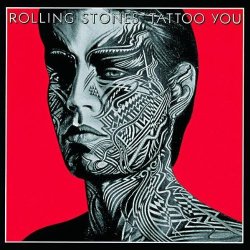New episode of my podcast

We’ve taken a couple of months off, but my @RollingStones “Deep Cuts”-themed podcast Under the Radar is back. http://rollingstonespodcast.wordpress.com
Check it out and subscribe!
RSS feed link here, or check Apple Podcasts.
A Day in the Life: a duet with tape echo
Isn’t that remarkable? While just about every critical analysis of this song recognizes the brilliance of the Beatles’ decision to leave a gap during the recording for two cacophonous ascending orchestral climaxes, and John always gets credit for delivering an amazing lead vocal performance, this little moment is actually my favourite part of the song… and I didn’t even know it was Paul’s the entire time. In retrospect, of course it makes sense for Paul to have sung this part (he also conducted the orchestra while they overdubbed the sustained chords that underscore it), as its melismatic tenor delivery is more typical of him than John’s more straightforward baritone singing. I didn’t hear John and George’s extemporaneous falsetto “oooooooh” vocals in the background, either (they’ve been there the entire time, just buried in the finished mix).
Tape echo (more commonly known as “delay”, in today’s recording parlance) was an important factor in John Lennon’s vocal performances throughout his career. He apparently loved hearing it back on headphones, drenching his voice as he sang; it gave an extra rhythmic element that he could play against, inventing unique vocal phrasing in the moment. This technique is all over John’s work on “A Day in the Life”, but the real insight for me is how much the production decision to stop the vocal echo for Paul’s “woke up” line, and then resume it for the “aaaah”, is what makes the middle bridge section so compelling. The surreal nature of the echo is a defining texture, enhancing John’s voice so well that when Paul’s “dry” voice first comes in, echo-free, it really is like waking out of a dream — and then plunging back into one, when the echo returns.
Statement on “The Lost Girls”
Just a sad situation all around. I hope the victims find some peace this long after the terribly brutal trauma this caused.
The story of Kim Fowley sexually abusing a young, intoxicated woman in a hotel room after a Runaways show is grim and horrifying. I would like to say it has knocked many readers into a stunned silence – but in these days, it instead seems to have ignited a firestorm. I personally need more time with the story to say all that I want to say. But I know that the Internet waits for no one (and is woefully unavailable where I am currently living!), so here are some of my current thoughts.
For one, the story is not entirely new. Cherie Currie spoke about it in Victory Tischler-Blue’s 2004 movie Edgeplay; the Runaways singer also wrote about it in detail in her 2011 memoir Neon Angel. I discuss it at length in my 2013 book Queens of Noise: The Real Story of the Runaways. What has…
View original post 1,610 more words
